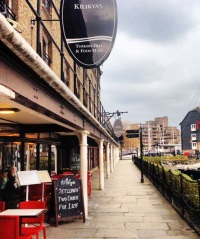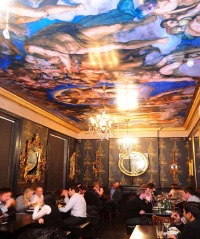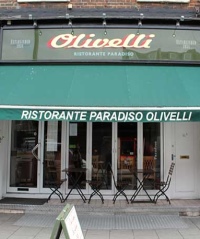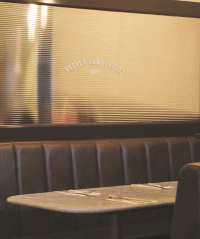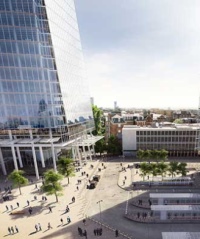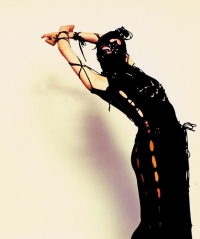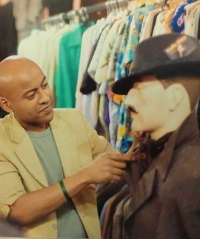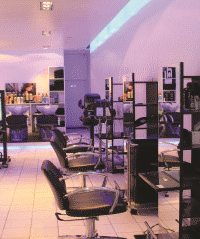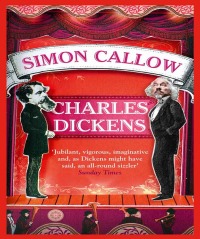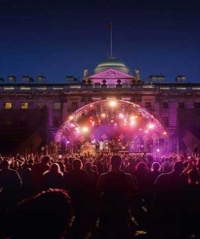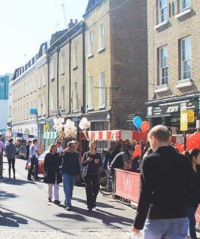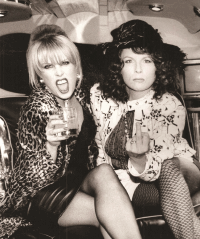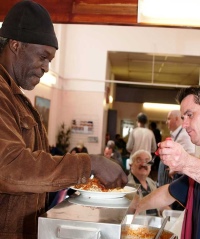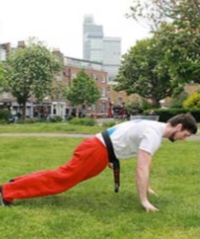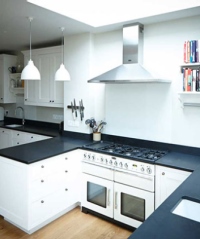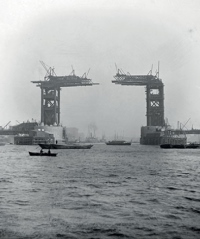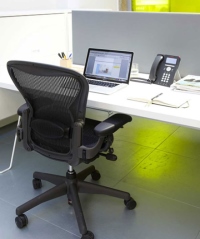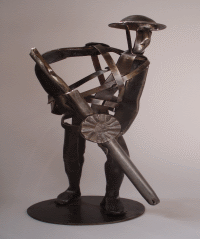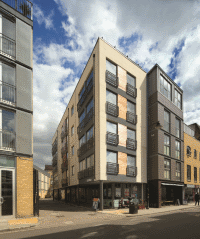over the past few years the cultural and commercial value of fitting new developments into the historic environment of cities was little appreciated. This has changed with the realisation that life in historic towns is enhanced by keeping historic buildings, monuments and street patterns. People want to live and work among these interesting and thought-provoking surroundings. London is a more varied city than almost any other metropolis in the world and Southwark in particular demonstrates this.
The new Berkeley Homes development One Tower Bridge occupies a site steeped in history which dates back at least two thousand years. Nestled between London Bridge and City Hall with views of the River Thames and the Tower of London, the site brings to life an area of Southwark that has seen little activity over the last few years.
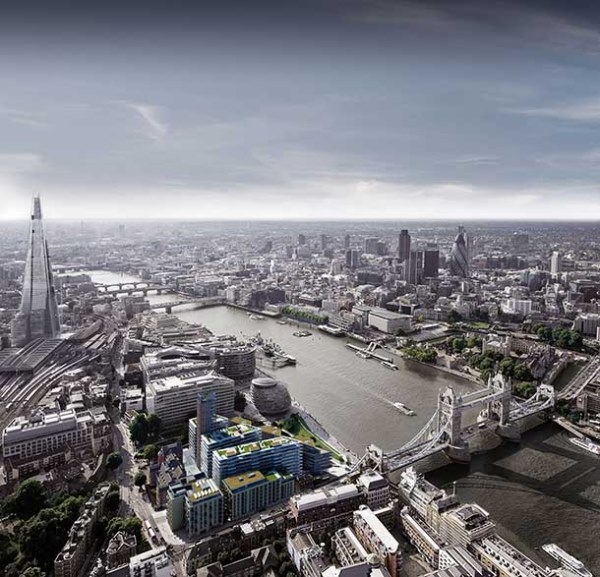
The history of this area began over 2,000 years ago when the River Thames was wider and the area which became Southwark and Bermondsey was a tangle of islands and tidal waterways. One of these islands lay approximately where the south end of Tower Bridge is today. Streams around it silted up or were filled in by generations of people and it became a flat and dry area called Horselydown. From scattered finds such as pottery, flint artefacts and animal bones, it seems possible that people lived on the Horselydown island in prehistory, perhaps 1,500 years before the Common Era as prehistoric plough marks have been detected at several sites in the vicinity.
By 1000 there was a place for foreign traders at Billingsgate, on the site of the former fishmarket building of 1875 which still stands on the City waterfront near London Bridge. The Tower of London, a royal fortress, was built by 1098. Southwark, began its post-Roman life in the late 9th and 10th centuries. By about 1000 London Bridge (formally known as the Roman bridge) had been re-established, roughly on its previous alignment. The bustling centre of Southwark in the Middle Ages was around the end of medieval London Bridge. Its spine, Borough High Street, ran, as it still does, south from the bridge. Here were many inns for travellers coming to the capital, for the gate on London Bridge was closed each night and until about 1470 the drawbridge there could also be pulled up.
“The area around One Tower Bridge was known as the ‘larder of London’
The ships which came to London, many of them with cargoes from the Low Countries, were mostly small, hardly larger than river craft. We also know from documents that on rare occasions a Venetian galley, an enormous ship for the time with several banks of oars, would come to trade in London. It would have anchored in the middle of the river, and be serviced by many smaller boats. One galley in 1481 had an immense cargo of carpets, silk, soap, spices, glass beakers and bottles and raisins. It would have amazed all the residents of Horselydown by its gigantic size and opulence, resembling the cruise liners of today.

From about 1550 to 1700, London grew in population by about eight times; after 1650, for the first time, London overtook Paris in its number of people. One of the main reasons for this was the creation of a trading empire round the world, based on a growing dominance of the oceans. Naturally the Southwark and Bermondsey waterfront was one of the centres of these increased activities.
During the 18th century the One Tower Bridge site comes into sharper focus. Two early street maps show every major street and many of the smaller alleys are named. At this date, the site was largely open space, being gardens behind houses on this part of Tooley Street (then called Horsley Down); to the west was the warren of alleys and small houses around Stoney Lane and Vine Yard (now Vine Lane). There were three stairs or points of public access to the river: from west to east, Still Stairs (at the top of Potters Fields alley), the curiously-named Dancing Bridge (the word ‘bridge’ was used to mean a simple stair into the water, for access to small boats), and Horselydown Old Stairs at the end of Horselydown Lane. Within the east side of the One Tower Bridge site was Freeman’s Lane running north from Tooley Street, but the houses there are not differentiated.
Whilst Tower Bridge looks older than it years it was actually only built in 1886-94. Designed by the engineer Sir John Wolfe Barry and the architect Sir Horace Jones. It quickly become the symbolic gateway between the Pool of London and the main area of docks downstream. It was designed with steam-powered lifting bascules to allow tall-masted and high-funnelled ships through, and high-level walkways to allow pedestrians across – assuming they were fit enough to climb all the stairs. The stonework conceals a thoroughly modern iron and steel structure.
The area around One Tower Bridge was known as the ‘larder of London’ because of all the foodstuffs landing here, including bananas, spices and rum from the Caribbean. Trade with Baltic countries, particularly in hides and fur, was also important. The commercial buildings – a private fiefdom of ‘bonded’ customs-sealed warehouses jealously guarded from the general public – filled the whole One Tower Bridge site back to the fine 1894. With the arrival of large container ships berthing downstream, the labour-intensive days of dockers and stevedores, those who loaded and unloaded the ships, drew to a close. The shipping and warehousing trade rapidly dwindled to a point where it became unviable this far upriver. The wharfs here closed in 1969, and the area fell silent and increasingly derelict. However, plans were being laid, and the buildings were acquired by property developers awaiting the creation of the next chapter in history.
That chapter is now well under way. One Tower Bridge is a luxury development of 1,2,3 and 4 bed stunning apartments, all with balconies and outstanding views over London and the river. Apartments with prices starting at £785,000 are now available for sale.
Sales Enquiries for One Tower Bridge
Sales Lounge (temporary location)
The Pavillion, Empire Square Long Lane,
SE1
t: 020 7871 0011
w. www.onetowerbridge.co.uk
-
THEATRE of Food
Take a seat at Olivelli
Category: Food&Drink -
OUR GREAT British pubs
We explore some of the measures taken by traditional pubs to stay upright in the modern era of austerity
Category: Food&Drink -
PAPPARDELLE with white truffle and dried mushrooms
From Fine Foods, SE1
Category: Food&Drink -
TURKISH delight
Tower Bridge, London's gateway to exotic foods is explored
Category: Food&Drink -
VINTAGE Style
The eternal appeal of nostalgia is vividly explored
Category: Style -
HELLO My Name is Paul Smith
The Design Museum recreates the life’s work of an iconic British designer
Category: Style -
ZANDRA RHODES Unseen...
Celebrating The 10th Anniversary of FTM
Category: Style -
The London Bridge Quarter
Rejuvenating one of London’s oldest areas
Category: Style -
Bermondsey Street FESTIVAL
21 September 2013 - Save the date!
Category: Culture -
CRACK COMEDY'S Edinburgh Fringe Previews
Bringing the festival to your front door
Category: Culture -
SUMMER in the City
Top ten things to do in London this summer
Category: Culture -
CHARLES DICKENS by Simon Callow
The Great Theatre of the World - A book review
Category: For The Soul -
TRAINING Outdoors
Fitness anywhere, anytime
Category: For The Soul -
The MANNA SOCIETY
Helping the homeless
Category: For The Soul -
POETRY
In this edition, we have a truly eclectic selection of poems from Greta Bellamacina and Lex Avis. Enjoy!
Category: For The Soul -
STATE OF THE ART and Flexible Office Space
The thriving environment of Renaissance Works
Category: Property -
HISTORY in the Making
Extracts from 'The Local History of One Tower Bridge'
Category: Property -
Handcrafted KITCHENS
Lift your home with ethically sourced materials and a bespoke design
Category: Property

